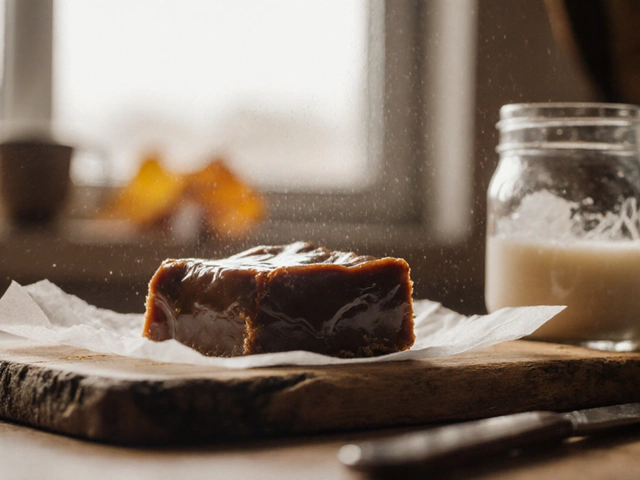Smooth Fudge: Easy Tips, Rescue Tricks, and Simple Recipes
If you’ve ever pulled a batch of fudge from the pan only to see it turn grainy or too hard, you’re not alone. A smooth, melt‑in‑your‑mouth fudge is only a few simple steps away. Below you’ll find the most common reasons fudge goes wrong, quick fixes for a botched batch, and two fool‑proof recipes you can make tonight.
Why Fudge Gets Grainy and How to Fix It
The biggest culprit is temperature. Fudge needs to hit the "soft‑ball" stage (around 235°F/112°C). Too low and the sugar crystals stay separate, giving you a gritty texture. Too high and the mixture hardens as it cools. Use a reliable candy thermometer and watch the clock. If you don’t have one, you can test by dropping a tiny bit into cold water – it should form a soft ball that flattens slowly.
Another sneaky factor is stirring. Beat the mixture right after you remove it from the heat. Stir just enough to break down any remaining crystals, then stop. Over‑stirring re‑creates crystals and makes the fudge grainy. A gentle, steady motion is all you need.
Sometimes the problem isn’t temperature at all. Adding ingredients like butter, cream, or corn syrup can help keep the sugar from crystallizing. If your recipe doesn’t already call for them, try adding a tablespoon of butter or a splash of heavy cream. It adds richness and smoothness without altering the flavor.
Quick Smooth Fudge Recipes You Can Try Tonight
Classic Chocolate Smooth Fudge
Ingredients: 2 cups chocolate chips, 1 cup sweetened condensed milk, 2 tbsp butter, 1 tsp vanilla.
Directions: Melt chocolate chips, condensed milk, and butter together over low heat, stirring constantly. Bring to a gentle boil, then remove from heat and stir in vanilla. Let the mixture sit for 5 minutes, then beat with a wooden spoon until it thickens and loses its shine. Pour into a lined pan, cool, and cut into squares.
This version uses condensed milk, which already has a smooth texture, making it hard to go wrong. Just keep the heat low and watch the mixture closely.
Nutty Peanut Butter Fudge
Ingredients: 1 cup peanut butter, 1 cup sugar, 1/2 cup milk, 1 tbsp butter, pinch of salt.
Heat sugar and milk together until the sugar dissolves, then bring to the soft‑ball stage. Remove from heat, stir in peanut butter, butter, and salt. Beat until the surface loses its gloss, then spread into a pan. Let it set at room temperature.
Peanut butter adds natural fat, which helps keep the fudge creamy. If you prefer a smoother finish, blend the peanut butter first for a uniform texture.
When a batch still ends up a little too firm, don’t toss it. Cut the fudge into small pieces and melt it gently with a splash of milk or cream. Use the liquid as a dip for fruit, a topping for ice cream, or even as a frosting for cupcakes. This rescue trick turns a failed fudge into a versatile sauce.
Remember, the key to smooth fudge is patience and a little attention to temperature. With the tips above and a simple recipe, you’ll be serving silky, melt‑in‑your‑mouth fudge in no time.






